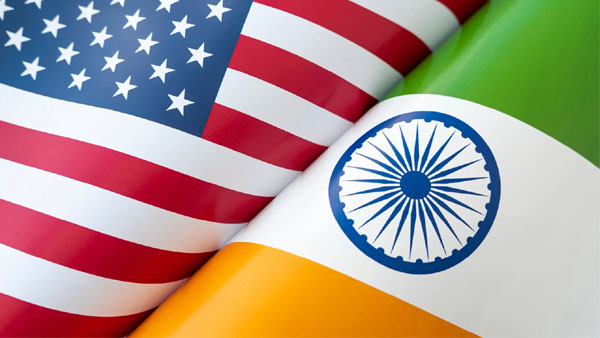By Dipak Kurmi
As Asia stands at a pivotal juncture in 2025, two seismic events—the Shangri-La Dialogue (SLD) in Singapore and South Korea’s presidential election—have illuminated the rapidly evolving contours of the region’s geopolitics. The SLD, Asia’s premier security forum, saw U.S. Defense Secretary Pete Hegseth articulate the Trump administration’s priorities, while French President Emmanuel Macron offered a contrasting European perspective on Indo-Pacific security. Concurrently, the likely ascension of Lee Jae-myung, a left-leaning candidate, to South Korea’s presidency signals a potential realignment in Northeast Asia’s strategic dynamics. These developments unfold against the backdrop of an assertive China, an unpredictable United States under President Donald Trump, and a region grappling with the fallout of trade wars and escalating tensions over Taiwan. For India, long anchored in a strategy of great-power harmony and economic interdependence, these shifts herald a new era of uncertainty, demanding enhanced national capabilities and strategic flexibility to navigate a fracturing regional order.
The Shangri-La Dialogue, convened annually in Singapore, has for over two decades served as a critical platform for dialogue on Asia’s security challenges. In 2025, the absence of China’s Defense Minister Dong Jun underscored the deepening crisis in U.S.-China relations, depriving the forum of its traditional role as a venue for direct superpower engagement. Hegseth, in his first SLD appearance since taking office in January, sought to reassure Asian allies of America’s commitment to the Indo-Pacific, declaring, “No one should doubt America’s commitment to our Indo-Pacific allies and partners… We will continue to wrap our arms around our friends and find new ways to work together.” Yet, his focus on “tanks, not tariffs” sidestepped the economic anxieties fueled by Trump’s trade policies, which have imposed sweeping tariffs on allies and adversaries alike, disrupting the region’s economic interdependence. The collapse of a trade truce negotiated by U.S. Treasury Secretary Scott Bessent, announced just before the SLD, dashed hopes of de-escalation, signaling renewed turbulence in U.S.-China commercial relations.
Hegseth’s speech was unequivocal in its assessment of China as an “imminent” threat, particularly regarding its ambitions to annex Taiwan by 2027—a timeline U.S. officials have cited, though unconfirmed by Beijing. He accused China of seeking to “dominate and control” Asia through a massive military buildup, gray-zone tactics, and provocative actions in the South China Sea, where it has clashed with neighbors like the Philippines over territorial claims. China’s foreign ministry retorted, accusing Hegseth of “vilifying” Beijing and ignoring regional calls for peace, while asserting that the U.S. itself is the “biggest troublemaker” for regional stability. Hegseth’s call for Asian allies to increase defense spending to 5% of GDP, citing NATO’s example, drew skepticism. Japan, aiming for 2% by 2027, struggles to mobilize resources, while India, facing threats from China and Pakistan, allocates only about 2%. Such demands, perceived as patronizing by some, like U.S. Senator Tammy Duckworth, risk straining alliances in a region where military spending averages 1.5% of GDP.
French President Emmanuel Macron, delivering the SLD’s keynote address, presented a divergent vision, emphasizing Europe’s stake in Indo-Pacific security and advocating for “strategic autonomy.” He called for new coalitions between Europe and Asia, arguing that economic interdependence could serve as a military deterrent. Kaja Kallas, the EU’s High Representative for Foreign and Security Policy, reinforced this, highlighting the interconnected security of Europe and Asia and positioning the EU as a “predictable and reliable partner” amid U.S. unpredictability. Macron critiqued the U.S. for double standards, rushing to defend Taiwan while wavering on Ukraine, a stance China’s Singapore embassy called “unacceptable” for equating Taiwan, which Beijing claims as its territory, with Ukraine. This European push for autonomy contrasts with Hegseth’s expectation that Europe focus on Russia, allowing the U.S. to prioritize the Indo-Pacific.
Meanwhile, South Korea’s presidential election, triggered by the ousting of conservative President Yoon Suk Yeol, has thrust domestic politics into the geopolitical spotlight. Lee Jae-myung, the progressive frontrunner, advocates “pragmatic realism,” seeking to reposition South Korea as a strategic balancer rather than a steadfast U.S. ally. Yoon had deepened Seoul’s alignment with Washington and Tokyo, adopting a hardline stance on China and North Korea. Lee, by contrast, prioritizes economic pragmatism, given that China absorbs about 25% of South Korea’s exports, particularly in semiconductors and batteries. He aims to stabilize trade and supply chains while maintaining the U.S. alliance, but with greater legislative oversight over South Korea’s involvement in U.S.-led operations, especially concerning Taiwan. This shift could complicate U.S. contingency planning, particularly as Hegseth emphasized the deployment of advanced capabilities, like Typhon missile launchers in the Philippines, to counter China.
Lee’s approach to North Korea marks a departure, favoring engagement through projects like the Kaesong Industrial Complex in exchange for denuclearization progress. This aligns with Trump’s expressed interest in re-engaging Pyongyang, potentially opening diplomatic avenues. However, Lee’s insistence on Japan addressing its imperial-era abuses contrasts with Yoon’s efforts to mend historical disputes, risking friction with Tokyo and Washington, which have pushed for trilateral cooperation. Lee’s vision reflects South Korea’s domestic divisions, where progressive and conservative factions hold divergent views on balancing security and economic priorities amid U.S.-China tensions.
For India, these developments signal the end of an era defined by great-power harmony and regional stability. Delhi’s Asian strategy has long relied on economic interdependence and strong regional institutions, but the intensifying U.S.-China rivalry and Trump’s erratic policies challenge this framework. Hegseth’s commitment to Indo-Pacific alliances, including joint exercises and defense production with countries like India, offers continuity from the Biden era, which bolstered partnerships through initiatives like the Quad. However, Trump’s tariffs and skepticism of multilateral frameworks, coupled with China’s absence from high-level SLD dialogue, heighten regional uncertainty. India, spending only 2% of GDP on defense despite border tensions with China, faces pressure to enhance its capabilities while navigating a region wary of choosing sides.
The SLD and South Korea’s political shift underscore Asia’s deepening dilemmas: balancing alliance commitments with strategic autonomy, and economic integration with commercial de-risking.
(the writer can be reached at dipakkurmiglpltd@gmail.com)




